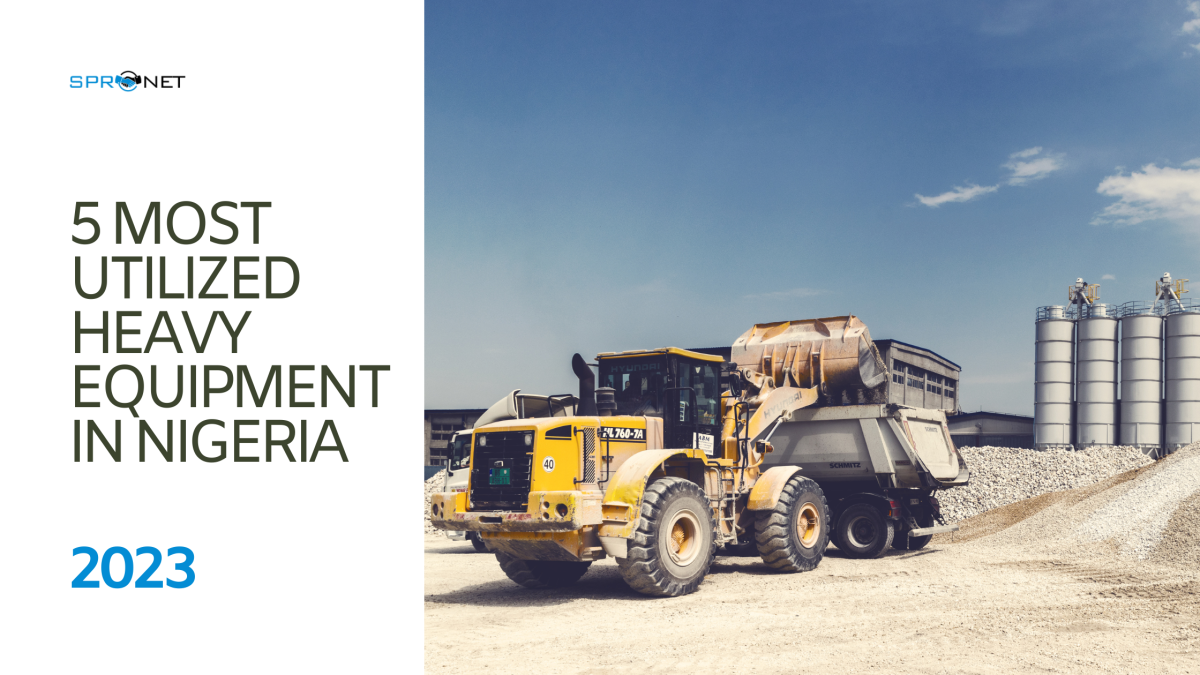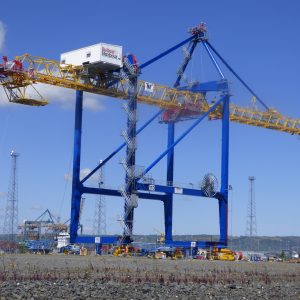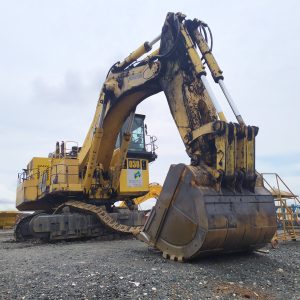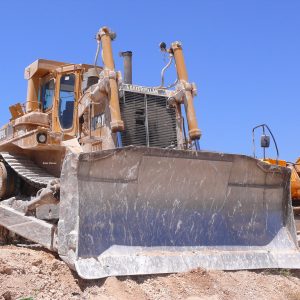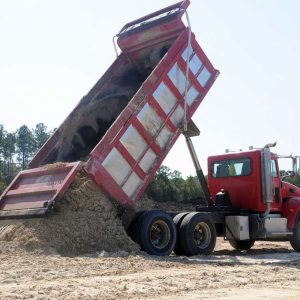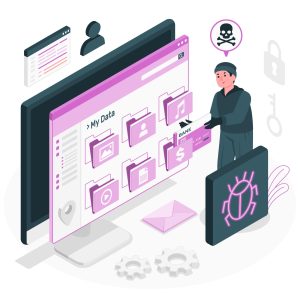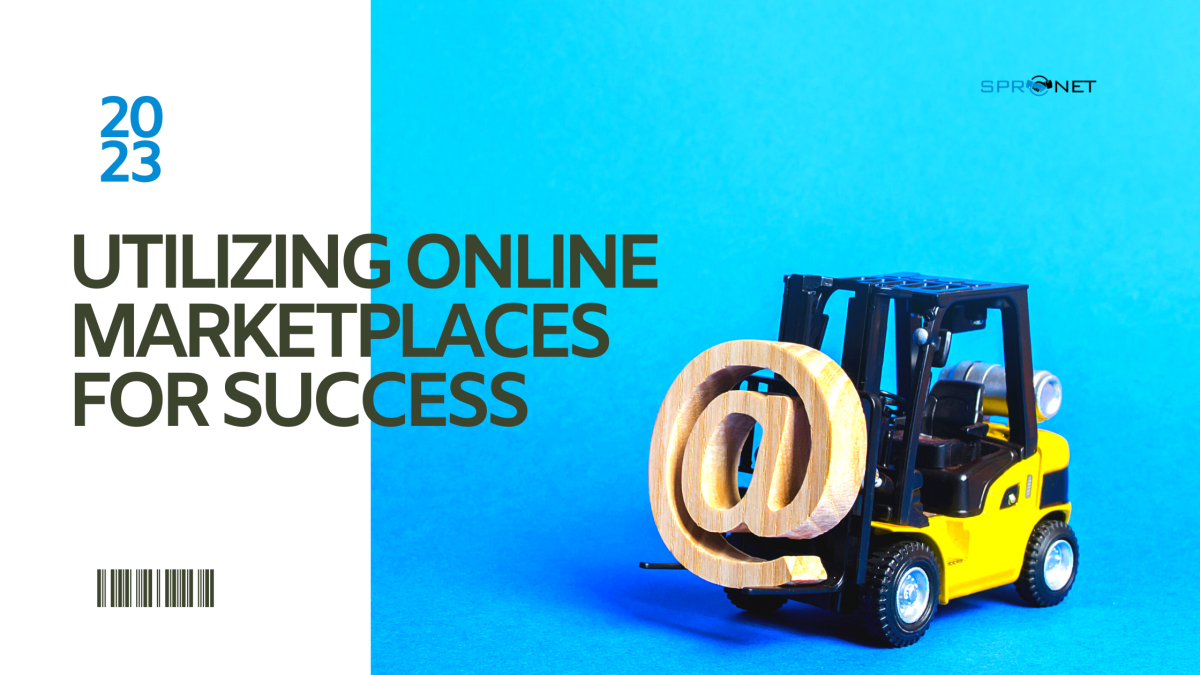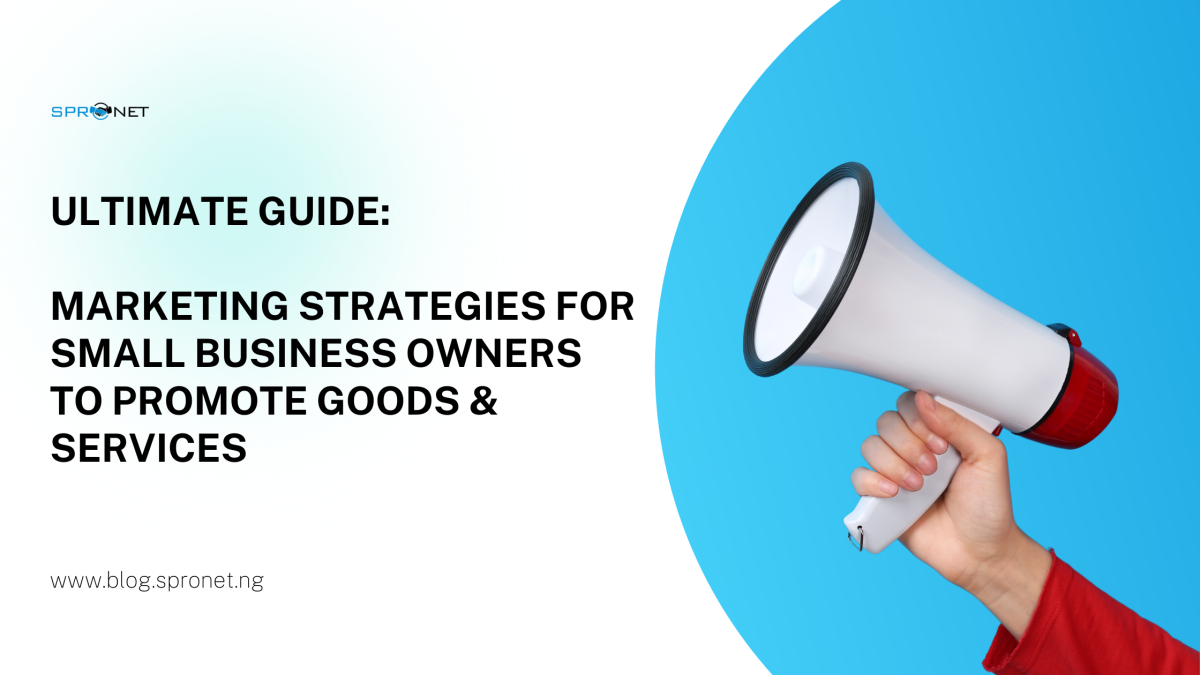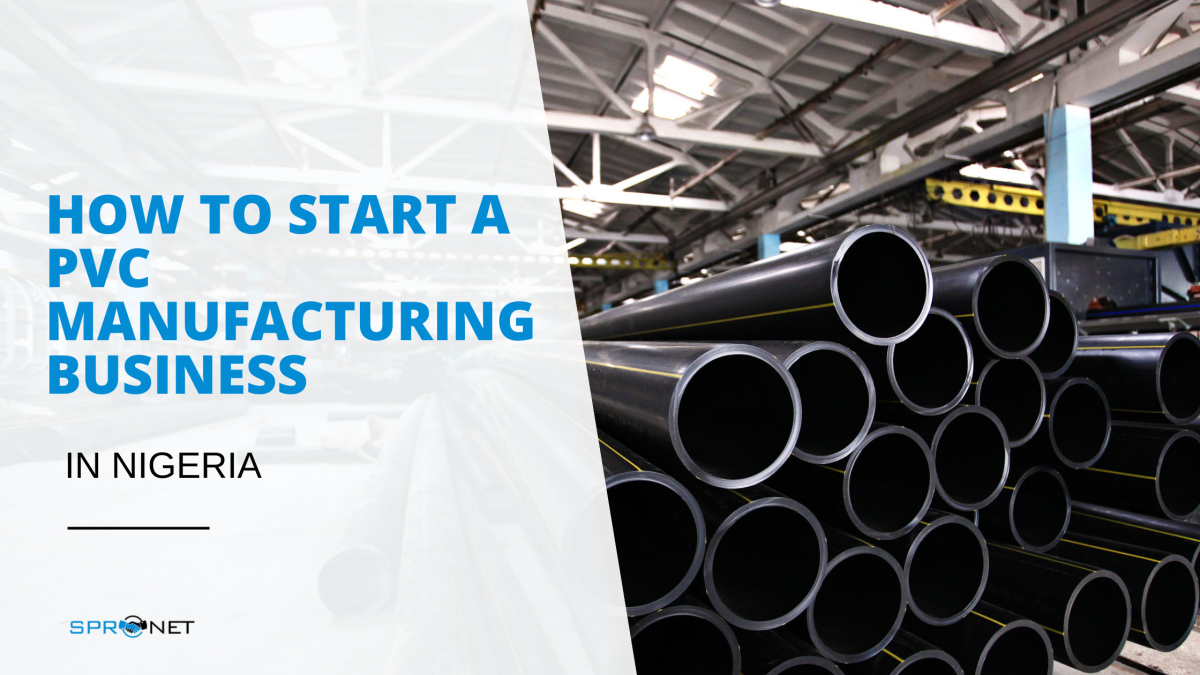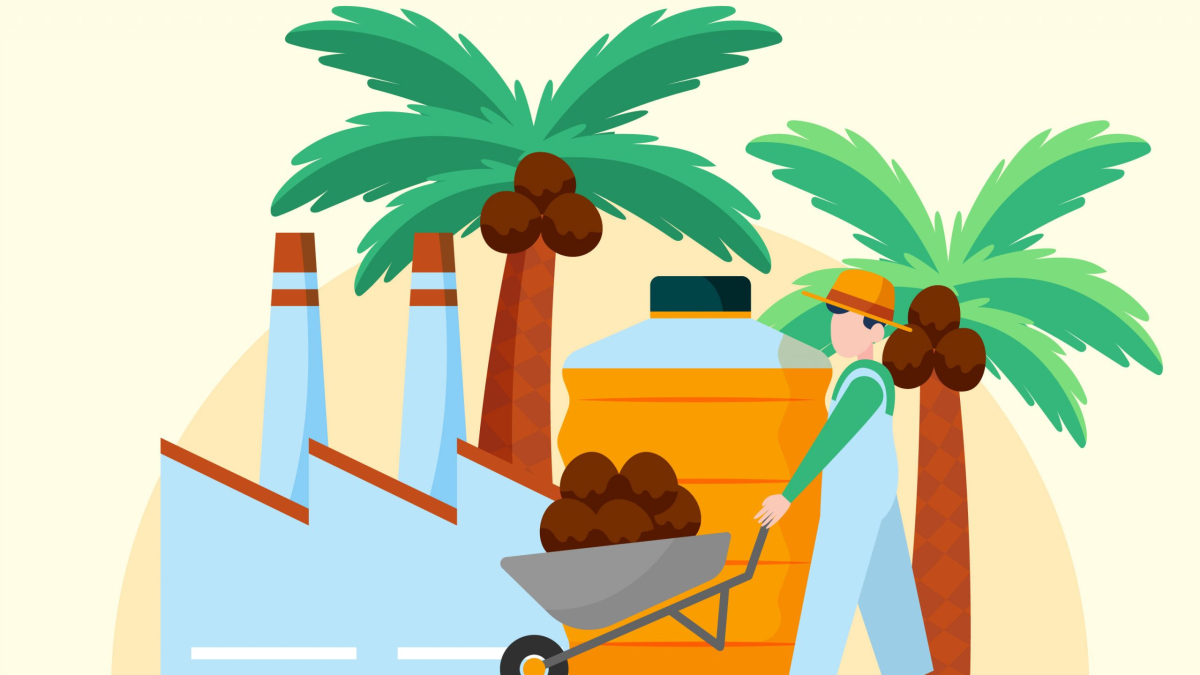Introduction: Unearthing the Backbone of Crude Oil Drilling
The world’s insatiable hunger for energy has driven the exploration and extraction of one of its most coveted resources: crude oil. This hydrocarbon-rich liquid has powered industries, transportation, and economies for over a century. Yet, the process of accessing this precious commodity from beneath the Earth’s surface is far from simple. It’s a complex, high-stakes operation that relies heavily on a formidable array of heavy equipment, each with a vital role to play in the intricate dance of crude oil drilling.
The modern oil drilling industry is a marvel of engineering, blending cutting-edge technology with raw power. It’s a symphony of colossal machinery and intricate systems working in harmony to extract the lifeblood of our industrialized world. In this in-depth exploration, we delve into the heart of this industry, uncovering the 20 plus heavy equipment pieces that are the unsung heroes of crude oil drilling.
From the towering drilling rigs that puncture the Earth’s crust to the sophisticated well control equipment that ensures safety, every component has a crucial part to play in this challenging endeavor. Together, these heavyweights of the oil field form the backbone of the energy sector, powering nations and economies with the liquid gold they yield.
Join us on this journey as we unveil the essential heavy equipment used in crude oil drilling. We’ll delve deep into their functions, unravel their significance, and gain a comprehensive understanding of the intricate machinery that drives the oil industry forward. These 20 pieces of heavy equipment are not merely tools; they are the unsung champions of an industry that fuels the modern world.
Section 1: Drilling Rigs – The Titans of Extraction

When it comes to crude oil drilling, the very first image that often comes to mind is that of towering drilling rigs, like colossal titans standing amidst the rugged terrain. These massive structures are the nerve centers of oil exploration, responsible for penetrating the Earth’s surface and tapping into the vast reservoirs of black gold below. In Section 1, we delve into the world of drilling rigs and the critical components that make them the workhorses of the industry.
1.1. Rotary Table
At the heart of any drilling rig is the rotary table, a robust mechanical device that provides the rotational force necessary to turn the drill string and bit. It’s the epicenter of the drilling operation, where torque is transferred from the rig’s engines to the drill pipe. The rotary table’s immense power is harnessed to bore through layers of rock and sediment, driving the drill bit deeper into the Earth’s crust.
1.2. Mud Pumps
As drilling progresses, it’s essential to keep the borehole stable and free from debris. This is where mud pumps come into play. These high-capacity pumps circulate a specialized drilling fluid, known as drilling mud, down the drill pipe and back up to the surface. Drilling mud serves multiple purposes, including cooling the drill bit, carrying rock cuttings to the surface, and preventing blowouts by exerting pressure against the well walls.
1.3. Top Drive System
Innovation has always been at the forefront of the oil drilling industry. The top drive system represents a significant leap forward in drilling technology. Unlike the traditional rotary table, the top drive system is a motorized device that attaches directly to the drill string. This innovation enables precise control of the drilling process, allowing for faster and more efficient drilling operations.
1.4. Blowout Preventer (BOP)
Safety is paramount in oil drilling, and the blowout preventer is a critical piece of equipment designed to avert disaster. It’s a robust apparatus placed above the wellhead, ready to act in the event of a sudden surge of pressure or uncontrolled release of oil and gas. The BOP can swiftly close off the well, preventing blowouts and protecting both the crew and the environment.
1.5. Drill Pipe
The drill pipe is the conduit through which the drilling mud is pumped and the drill bit is lowered into the well. These heavy-duty pipes are specially designed to withstand the extreme pressures and forces encountered in deep drilling. Their seamless construction ensures the integrity of the well, even in the harshest drilling conditions.
As we’ve seen, drilling rigs are the lifeblood of crude oil extraction, and these components within Section 1 form the foundation upon which the entire drilling operation rests. Each component plays a pivotal role in the intricate dance of drilling, enabling the industry to reach new depths and unlock the world’s vast reserves of crude oil. In the sections that follow, we’ll continue to explore the heavy equipment that makes crude oil drilling a remarkable feat of engineering and technology.
Read Full Article Here: Drilling Rigs: The Titans of Crude Oil Extraction
Are you a stockist, dealer, or supplier of oilfield equipment in Nigeria looking to showcase your products, services, and machinery to industry buyers and procurement specialists? Or perhaps you’re a procurement manager, project supervisor, or end-user searching for hard-to-find oilfield tools, drilling equipment, safety gear, or machinery in Nigeria? Look no further.
Spronet.ng is your go-to online oil and gas marketplace, connecting sellers, dealers, and suppliers of oilfield equipment, oil tools, couplings, machines, and safety materials directly with buyers and procurement experts in the oil and gas industry—all for free! Whether you’re offering industrial equipment, offshore tools, or specialized oilfield services, or you’re in need of them, Spronet.ng simplifies the process.
Register for free at Spronet.ng to upload your oilfield products or services and start connecting with verified buyers, dealers, and suppliers today. Take advantage of this free platform to grow your network and business in the booming Nigerian oil and gas sector.
Join now at Spronet.ng/signup. It’s free, and it always will be!
Section 2: Well Control Equipment – Safeguarding the Precious Resource
In Section 1, we explored the colossal drilling rigs that pierce the Earth’s surface to access crude oil reservoirs. Now, in Section 2, we shift our focus to a set of equipment that is paramount in ensuring the safety and control of the drilling process: well control equipment.
2.1. Wellhead
The wellhead is the gateway between the subsurface reservoir and the surface world. It’s a critical component that provides a secure point of control for the well. Wellheads house valves and equipment that regulate the flow of oil and gas, allowing operators to start, stop, or redirect production as needed. Additionally, wellheads provide a critical barrier to prevent leaks and blowouts.
2.2. Choke Manifold
Controlling the flow of fluids in the wellbore is a delicate task, and the choke manifold is the instrument that masters it. This assembly of valves, pipes, and instruments adjusts the pressure and flow rate of the drilling fluids, ensuring the well operates within safe limits. It’s a crucial component in preventing uncontrolled blowouts and maintaining well integrity.
2.3. Kill Manifold
The counterpart to the choke manifold, the kill manifold serves a different but equally important purpose. In emergency situations where the well is uncontrollable, the kill manifold injects heavy fluids or drilling mud into the wellbore to counteract the pressure and regain control. It’s a last line of defense against well blowouts, protecting both personnel and the environment.
Well control equipment is the guardian of every drilling operation. These components are always at the ready, monitoring pressures, controlling flows, and intervening when needed to prevent catastrophic events. In the next section, we’ll shift our focus to another critical aspect of crude oil drilling, the hoisting equipment that lifts tons of materials in and out of the wellbore, keeping the operation moving smoothly and safely.
Read Full Article Here: Well Control Equipment: Safeguarding the Precious Resource
Are you a stockist, dealer, or supplier of oilfield equipment in Nigeria looking to showcase your products, services, and machinery to industry buyers and procurement specialists? Or perhaps you’re a procurement manager, project supervisor, or end-user searching for hard-to-find oilfield tools, drilling equipment, safety gear, or machinery in Nigeria? Look no further.
Spronet.ng is your go-to online oil and gas marketplace, connecting sellers, dealers, and suppliers of oilfield equipment, oil tools, couplings, machines, and safety materials directly with buyers and procurement experts in the oil and gas industry—all for free! Whether you’re offering industrial equipment, offshore tools, or specialized oilfield services, or you’re in need of them, Spronet.ng simplifies the process.
Register for free at Spronet.ng to upload your oilfield products or services and start connecting with verified buyers, dealers, and suppliers today. Take advantage of this free platform to grow your network and business in the booming Nigerian oil and gas sector.
Join now at Spronet.ng/signup. It’s free, and it always will be!
Section 3: Hoisting Equipment – Lifting the Heavy Burden
In the world of crude oil drilling, the ability to hoist massive loads with precision and reliability is a fundamental requirement. Section 3 introduces us to the impressive hoisting equipment that plays a pivotal role in raising and lowering heavy components during drilling operations.
3.1. Drawworks
At the core of hoisting operations on a drilling rig is the drawworks. This powerful winching system, typically located on the rig floor, provides the muscle needed to hoist drill pipe, casing, and other equipment in and out of the wellbore. It controls the speed and tension of the hoist, ensuring that heavy loads are handled safely and efficiently.
3.2. Crown Block
High above the rig floor, you’ll find the crown block. This massive pulley system is securely mounted to the derrick or mast and plays a crucial role in supporting the drilling line as it descends into the wellbore. The crown block’s design allows for controlled movement of the drill string, reducing friction and wear during hoisting operations.
3.3. Traveling Block
Working in tandem with the crown block is the traveling block. This movable pulley system travels up and down the derrick, counterbalanced by the weight of the drill string. The traveling block’s function is to guide and support the load, ensuring that it is raised and lowered smoothly and with precision.
3.4. Derrick
The towering structure that defines the silhouette of a drilling rig is the derrick. This vertical framework provides structural support for the crown and traveling blocks, as well as a platform for rig workers to access the drilling equipment. The derrick’s robust design allows it to withstand the rigors of the drilling process, providing a stable platform for hoisting operations.
Hoisting equipment is the powerhouse of the drilling rig, enabling the controlled lifting and lowering of heavy components into the wellbore. These components work in harmony, ensuring that the drill string, casing, and other materials are maneuvered with precision and care, maintaining safety and efficiency throughout the operation.
In the next section, we’ll explore the critical role played by the mud circulation system in keeping the drilling process running smoothly by managing drilling fluids and mitigating potential challenges.
Read Full Article Here: 7 Hoisting Equipment: Lifting the Heavy Burden in Crude Oil Drilling
Are you a stockist, dealer, or supplier of oilfield equipment in Nigeria looking to showcase your products, services, and machinery to industry buyers and procurement specialists? Or perhaps you’re a procurement manager, project supervisor, or end-user searching for hard-to-find oilfield tools, drilling equipment, safety gear, or machinery in Nigeria? Look no further.
Spronet.ng is your go-to online oil and gas marketplace, connecting sellers, dealers, and suppliers of oilfield equipment, oil tools, couplings, machines, and safety materials directly with buyers and procurement experts in the oil and gas industry—all for free! Whether you’re offering industrial equipment, offshore tools, or specialized oilfield services, or you’re in need of them, Spronet.ng simplifies the process.
Register for free at Spronet.ng to upload your oilfield products or services and start connecting with verified buyers, dealers, and suppliers today. Take advantage of this free platform to grow your network and business in the booming Nigerian oil and gas sector.
Join now at Spronet.ng/signup. It’s free, and it always will be!
Section 4: Mud Circulation System – Managing the Drilling Fluids
The success of any crude oil drilling operation hinges on the efficient management of drilling fluids, and that’s precisely what Section 4 focuses on. The mud circulation system, a complex network of equipment and processes, is responsible for maintaining well stability, cooling the drill bit, and managing drilling cuttings. Let’s dive into the crucial components that make up this vital system.
4.1. Mud Tanks
The heart of the mud circulation system lies in the mud tanks. These colossal containers hold the drilling mud, a specially formulated mixture of water, clay, and other additives. Mud tanks provide a reservoir for the fluid, ensuring a continuous supply during drilling operations. They are designed to handle immense volumes of mud, helping to maintain wellbore stability.
4.2. Mud Agitators
Drilling mud isn’t a stagnant liquid; it needs to be kept in constant motion to prevent settling and maintain its properties. Mud agitators are mechanical devices strategically placed within the mud tanks. They stir the mud, ensuring that solids are evenly distributed, and the mud remains homogenous in composition.
4.3. Shale Shakers
As drilling progresses, rock cuttings and debris are brought to the surface by the circulating mud. These unwanted materials must be separated from the mud to maintain its effectiveness. Shale shakers are specialized vibrating screens that efficiently remove solid particles from the mud, allowing the clean mud to be returned to the system.
4.4. Desilters and Desanders
For finer filtration and particle removal, desilters and desanders are brought into play. These hydrocyclone systems can separate even smaller solid particles from the drilling mud, ensuring that the fluid remains as clean as possible. This level of filtration is essential for protecting downhole equipment and maintaining drilling efficiency.
The mud circulation system is the unsung hero of any drilling operation. It manages the drilling fluids, cools the drill bit, and prevents wellbore instability, all of which are essential for a successful and safe drilling process. In the following sections, we’ll continue our journey through the heavy equipment that makes crude oil drilling a marvel of engineering and precision.
Read Full Article Here: Mud Circulation System: The Lifeblood of Crude Oil Drilling
Are you a stockist, dealer, or supplier of oilfield equipment in Nigeria looking to showcase your products, services, and machinery to industry buyers and procurement specialists? Or perhaps you’re a procurement manager, project supervisor, or end-user searching for hard-to-find oilfield tools, drilling equipment, safety gear, or machinery in Nigeria? Look no further.
Spronet.ng is your go-to online oil and gas marketplace, connecting sellers, dealers, and suppliers of oilfield equipment, oil tools, couplings, machines, and safety materials directly with buyers and procurement experts in the oil and gas industry—all for free! Whether you’re offering industrial equipment, offshore tools, or specialized oilfield services, or you’re in need of them, Spronet.ng simplifies the process.
Register for free at Spronet.ng to upload your oilfield products or services and start connecting with verified buyers, dealers, and suppliers today. Take advantage of this free platform to grow your network and business in the booming Nigerian oil and gas sector.
Join now at Spronet.ng/signup. It’s free, and it always will be!
Section 5: Cementing Equipment – Securing the Well
In Section 4, we explored the vital role of the mud circulation system in managing drilling fluids. Now, in Section 5, we shift our focus to another critical aspect of crude oil drilling: cementing equipment. Cementing is a crucial step in ensuring the integrity and stability of the wellbore, and it’s achieved through a specialized set of equipment.
5.1. Cementing Unit
The cementing unit is a powerhouse responsible for mixing, pumping, and delivering the cement slurry down the wellbore. This slurry seals the space between the casing and the wellbore, creating a barrier that prevents fluid migration and ensures well integrity. The precision of the cementing unit’s operations is crucial to a successful cementing job.
5.2. Cementing Head
At the top of the casing, a cementing head is used to guide the cement slurry into the wellbore. This equipment is designed to ensure a clean and controlled flow of cement, preventing contamination and ensuring that the cement is placed precisely where it’s needed to create a secure seal.
5.3. Cement Silo
Cement is a key component in the drilling process, and it’s stored in cement silos on the drilling site. These large storage containers keep the cement dry and ready for use. When it’s time to cement the well, the cementing unit draws from the silos to create the slurry that will be pumped down the wellbore.
Cementing equipment plays a pivotal role in ensuring the structural integrity of the well. It’s the last line of defense against fluid migration and the protection of underground aquifers. Proper cementing is essential not only for well stability but also for environmental protection.
As we continue our exploration of heavy equipment used in crude oil drilling, the next section will delve into pipe handling equipment. These components are responsible for the safe and efficient handling of drill pipes, casings, and tubing, ensuring the drilling process remains on track.
Read Full Article Here: Cementing Equipment: Securing the Integrity of Oil Wells
Are you a stockist, dealer, or supplier of oilfield equipment in Nigeria looking to showcase your products, services, and machinery to industry buyers and procurement specialists? Or perhaps you’re a procurement manager, project supervisor, or end-user searching for hard-to-find oilfield tools, drilling equipment, safety gear, or machinery in Nigeria? Look no further.
Spronet.ng is your go-to online oil and gas marketplace, connecting sellers, dealers, and suppliers of oilfield equipment, oil tools, couplings, machines, and safety materials directly with buyers and procurement experts in the oil and gas industry—all for free! Whether you’re offering industrial equipment, offshore tools, or specialized oilfield services, or you’re in need of them, Spronet.ng simplifies the process.
Register for free at Spronet.ng to upload your oilfield products or services and start connecting with verified buyers, dealers, and suppliers today. Take advantage of this free platform to grow your network and business in the booming Nigerian oil and gas sector.
Join now at Spronet.ng/signup. It’s free, and it always will be!
Section 6: Pipe Handling Equipment – Safely Managing the Drill String
In Section 5, we delved into the world of cementing equipment, which is crucial for ensuring well integrity. Now, in Section 6, our focus shifts to another critical aspect of crude oil drilling: pipe handling equipment. These specialized tools and machinery are responsible for safely managing the drill string, casing, and tubing, ensuring that the drilling process remains smooth and efficient.
6.1. Pipe Racks
Pipe racks are storage structures located on the drilling rig. They serve as organized repositories for drill pipes, casings, and tubing. These racks are designed to securely hold and protect the tubular components, preventing damage and ensuring they are readily accessible when needed during drilling operations.
6.2. Pipe Tongs
When it comes to the heavy lifting of pipes, pipe tongs are indispensable. These mechanical tools provide a strong grip on the drill pipes, casings, or tubing, allowing them to be lifted, lowered, and manipulated safely and with precision. Pipe tongs come in various sizes and configurations to accommodate different types of pipe.
6.3. Pipe Spinners
Efficiency is paramount in drilling operations, and pipe spinners contribute to this by automating the process of connecting and disconnecting drill pipe sections. These motorized devices securely grip and rotate the pipe, making the makeup and breakout of the drill string quicker and reducing manual labor requirements.
Pipe handling equipment streamlines the handling and manipulation of drill pipe and other tubular components, improving the overall efficiency and safety of drilling operations. Properly managed and maintained, these components ensure that the drill string is assembled and disassembled with precision, minimizing downtime and maximizing productivity.
As we proceed in our exploration of heavy equipment used in crude oil drilling, the next section will uncover the vital role played by well testing equipment in assessing well productivity and ensuring safe production.
Are you a stockist, dealer, or supplier of oilfield equipment in Nigeria looking to showcase your products, services, and machinery to industry buyers and procurement specialists? Or perhaps you’re a procurement manager, project supervisor, or end-user searching for hard-to-find oilfield tools, drilling equipment, safety gear, or machinery in Nigeria? Look no further.
Spronet.ng is your go-to online oil and gas marketplace, connecting sellers, dealers, and suppliers of oilfield equipment, oil tools, couplings, machines, and safety materials directly with buyers and procurement experts in the oil and gas industry—all for free! Whether you’re offering industrial equipment, offshore tools, or specialized oilfield services, or you’re in need of them, Spronet.ng simplifies the process.
Register for free at Spronet.ng to upload your oilfield products or services and start connecting with verified buyers, dealers, and suppliers today. Take advantage of this free platform to grow your network and business in the booming Nigerian oil and gas sector.
Join now at Spronet.ng/signup. It’s free, and it always will be!
Section 7: Well Testing Equipment – Assessing Well Productivity
In Section 6, we explored the importance of pipe handling equipment in the drilling process. Now, in Section 7, we turn our attention to another critical facet of crude oil drilling: well testing equipment. These specialized tools and instruments play a pivotal role in assessing well productivity, determining reservoir characteristics, and ensuring safe and efficient production.
7.1. Flowback Equipment
After drilling and completing a well, it’s essential to understand its initial production capabilities. Flowback equipment is deployed to assess the flow of oil, gas, and formation fluids from the well during the initial stages of production. This process helps engineers gather data on the well’s performance and allows for adjustments to optimize production.
7.2. Surface Testing Equipment
Surface testing equipment encompasses a range of tools and devices used to analyze the fluids produced from the well. This includes measuring parameters such as flow rates, pressure, temperature, and composition. Surface testing equipment provides valuable insights into the well’s behavior and characteristics, aiding in reservoir management and production planning.
Well testing equipment serves as the eyes and ears of the drilling operation, allowing engineers and operators to monitor the well’s performance and make informed decisions. It plays a crucial role in ensuring that the well is producing efficiently and safely while also providing data that informs reservoir management strategies.
As our exploration of heavy equipment used in crude oil drilling continues, the next section will introduce the critical safety equipment that safeguards both personnel and the environment on drilling sites.
Are you a stockist, dealer, or supplier of oilfield equipment in Nigeria looking to showcase your products, services, and machinery to industry buyers and procurement specialists? Or perhaps you’re a procurement manager, project supervisor, or end-user searching for hard-to-find oilfield tools, drilling equipment, safety gear, or machinery in Nigeria? Look no further.
Spronet.ng is your go-to online oil and gas marketplace, connecting sellers, dealers, and suppliers of oilfield equipment, oil tools, couplings, machines, and safety materials directly with buyers and procurement experts in the oil and gas industry—all for free! Whether you’re offering industrial equipment, offshore tools, or specialized oilfield services, or you’re in need of them, Spronet.ng simplifies the process.
Register for free at Spronet.ng to upload your oilfield products or services and start connecting with verified buyers, dealers, and suppliers today. Take advantage of this free platform to grow your network and business in the booming Nigerian oil and gas sector.
Join now at Spronet.ng/signup. It’s free, and it always will be!
Section 8: Safety Equipment – Protecting People and the Environment
In the world of crude oil drilling, safety is paramount. The harsh and complex environment of drilling sites presents numerous risks to personnel, equipment, and the surrounding ecosystem. Section 8 delves into the critical safety equipment and measures in place to protect both workers and the environment during drilling operations.
8.1. H2S Scavengers
Hydrogen sulfide (H2S) is a highly toxic gas that can be encountered during drilling operations. H2S scavengers are chemical agents designed to neutralize and remove this deadly gas from drilling fluids and wellbore gases. By eliminating H2S, these scavengers safeguard the health and lives of workers on the rig.
8.2. Fire Suppression Systems
The presence of flammable materials, high temperatures, and machinery operation on drilling rigs can create a fire hazard. Fire suppression systems, including fire extinguishers, foam systems, and deluge systems, are strategically placed throughout the rig to detect and combat fires swiftly. They are crucial in preventing catastrophic fires that can lead to injuries, equipment damage, and environmental disasters.
8.3. Personal Protective Equipment (PPE)
Workers on drilling rigs are equipped with a comprehensive array of personal protective equipment to mitigate the risks associated with their tasks. This includes hard hats, safety glasses, ear protection, flame-resistant clothing, gloves, and steel-toed boots. Workers must adhere to strict PPE guidelines to ensure their safety during drilling operations.
8.4. Safety Barriers and Guardrails
To prevent falls and accidents, drilling rigs are equipped with safety barriers and guardrails. These physical barriers create designated safe areas for workers and protect them from potentially hazardous locations, such as open pits, equipment edges, and elevated platforms.
8.5. Environmental Protection Measures
Crude oil drilling sites are often located in ecologically sensitive areas. To minimize the environmental impact, containment measures such as spill berms and liners are used to prevent the accidental release of drilling fluids or oil into the surrounding environment. Additionally, wildlife protection protocols may be in place to safeguard local ecosystems.
Safety equipment and protocols are not just a requirement but a fundamental commitment in the crude oil drilling industry. Rigorous safety measures protect the lives and well-being of workers while preserving the environment from potential harm. The combination of H2S scavengers, fire suppression systems, PPE, safety barriers, and environmental protection measures ensures that drilling operations are conducted with the utmost care and responsibility.
As we continue our journey through the heavy equipment used in crude oil drilling, the next section will explore auxiliary equipment that plays a supporting role in the drilling process, enhancing efficiency and safety.
Are you a stockist, dealer, or supplier of oilfield equipment in Nigeria looking to showcase your products, services, and machinery to industry buyers and procurement specialists? Or perhaps you’re a procurement manager, project supervisor, or end-user searching for hard-to-find oilfield tools, drilling equipment, safety gear, or machinery in Nigeria? Look no further.
Spronet.ng is your go-to online oil and gas marketplace, connecting sellers, dealers, and suppliers of oilfield equipment, oil tools, couplings, machines, and safety materials directly with buyers and procurement experts in the oil and gas industry—all for free! Whether you’re offering industrial equipment, offshore tools, or specialized oilfield services, or you’re in need of them, Spronet.ng simplifies the process.
Register for free at Spronet.ng to upload your oilfield products or services and start connecting with verified buyers, dealers, and suppliers today. Take advantage of this free platform to grow your network and business in the booming Nigerian oil and gas sector.
Join now at Spronet.ng/signup. It’s free, and it always will be!
Section 9: Auxiliary Equipment – Enhancing Efficiency and Safety
In addition to the core components discussed in previous sections, crude oil drilling relies on a range of auxiliary equipment to enhance operational efficiency and safety. Section 9 explores these supportive components that play crucial roles in ensuring the smooth functioning of drilling operations.
9.1. Generators and Power Systems
Drilling rigs require a substantial amount of power to operate their machinery, lighting, and control systems. Generators and power systems provide a reliable source of electricity, ensuring that all equipment functions smoothly. These systems are often designed with redundancy to minimize downtime due to power failures.
9.2. Mud Logging Units
Mud logging is a critical part of the drilling process that involves monitoring the drilling mud for geological and chemical data. Mud logging units include sensors and analyzers that assess parameters such as gas content, rock cuttings, and formation properties. This data helps geologists and engineers make informed decisions about the well’s progress and potential reservoir characteristics.
9.3. Data Acquisition and Control Systems
Modern drilling rigs are equipped with sophisticated data acquisition and control systems. These systems collect and transmit real-time data on drilling parameters, downhole conditions, and safety measurements. Engineers and operators use this information to make immediate adjustments and optimize drilling operations.
9.4. Wellbore Navigation Tools
Navigating the wellbore accurately is crucial to drilling success. Wellbore navigation tools, such as measurement-while-drilling (MWD) and logging-while-drilling (LWD) systems, provide continuous information about the well’s direction, inclination, and geological properties. This data ensures that the well is drilled precisely according to plan.
9.5. Rigging and Lifting Equipment
Beyond the primary hoisting equipment, additional rigging and lifting equipment are employed to handle materials, tools, and supplies on the drilling rig. Cranes, winches, and lifting slings are used to move heavy loads safely and efficiently.
9.6. Waste Management Systems
Drilling generates waste materials, including drilling cuttings and used drilling fluids. Waste management systems are responsible for the collection, treatment, and disposal of these materials in an environmentally responsible manner, minimizing ecological impact.
9.7. Communication Systems
Effective communication is vital on a drilling rig, both for safety and operational purposes. Communication systems, including radios, intercoms, and satellite links, ensure that all personnel on the rig can stay in contact with each other and with onshore teams.
9.8. Lighting and Safety Signage
Given that drilling operations continue around the clock, proper lighting is essential for safety and efficiency. Adequate lighting systems illuminate the rig and work areas, while safety signage and marking indicate potential hazards and safe routes.
Auxiliary equipment plays a crucial role in enhancing the efficiency and safety of crude oil drilling operations. These components provide the necessary power, data, navigation, and support to ensure that drilling proceeds smoothly, accurately, and with minimal risk to personnel and the environment.
As we proceed with our exploration of heavy equipment in crude oil drilling, the next section will uncover specialized tools and instruments used for well completion, a critical phase that prepares the well for production.
Are you a stockist, dealer, or supplier of oilfield equipment in Nigeria looking to showcase your products, services, and machinery to industry buyers and procurement specialists? Or perhaps you’re a procurement manager, project supervisor, or end-user searching for hard-to-find oilfield tools, drilling equipment, safety gear, or machinery in Nigeria? Look no further.
Spronet.ng is your go-to online oil and gas marketplace, connecting sellers, dealers, and suppliers of oilfield equipment, oil tools, couplings, machines, and safety materials directly with buyers and procurement experts in the oil and gas industry—all for free! Whether you’re offering industrial equipment, offshore tools, or specialized oilfield services, or you’re in need of them, Spronet.ng simplifies the process.
Register for free at Spronet.ng to upload your oilfield products or services and start connecting with verified buyers, dealers, and suppliers today. Take advantage of this free platform to grow your network and business in the booming Nigerian oil and gas sector.
Join now at Spronet.ng/signup. It’s free, and it always will be!
Section 10: Well Completion Equipment – Preparing for Production
In Section 9, we explored the crucial auxiliary equipment that supports drilling operations. Now, in Section 10, we delve into well completion equipment. This set of specialized tools and instruments is responsible for preparing the drilled well for production, ensuring that it can deliver crude oil efficiently and safely to the surface.
10.1. Completion Packers
Completion packers are downhole tools that create a seal between the wellbore and the casing, isolating specific zones within the well. They are crucial for controlling the flow of fluids and preventing unwanted fluid migration between different geological formations. Packers are set in place to secure the wellbore before production begins.
10.2. Tubing and Perforating Guns
To facilitate the flow of fluids from the reservoir to the surface, tubing is installed inside the casing. Perforating guns are used to create openings or perforations in the casing and surrounding cement, allowing reservoir fluids to enter the wellbore. Tubing and perforating guns are essential for establishing a pathway for the oil to flow.
10.3. Safety Valves
Safety valves are vital components installed in the production tubing to control the flow of fluids during production. They can be remotely operated to close off the well in the event of an emergency, such as a blowout or unexpected pressure surge, ensuring the safety of personnel and equipment.
10.4. Artificial Lift Systems
Not all oil reservoirs naturally flow to the surface under their own pressure. Artificial lift systems, such as electric submersible pumps, gas lift systems, and beam pumps, are used to enhance the flow of oil from the well to the surface. These systems are crucial for maintaining production rates.
10.5. Wellhead Equipment
Wellhead equipment is installed at the top of the well casing and serves as the interface between the wellbore and the production facilities. It includes valves, chokes, and connections for controlling the flow of oil and gas and regulating pressure. Wellhead equipment also provides a point for attaching production tubing and safety equipment.
10.6. Downhole Sensors and Gauges
To monitor the conditions and performance of the well during production, downhole sensors and gauges are installed at various points in the wellbore. These instruments measure parameters such as pressure, temperature, flow rates, and fluid composition, providing critical data for reservoir management and optimization.
Well completion equipment marks the transition from drilling to production, ensuring that the well is prepared to deliver crude oil efficiently and safely to the surface. The selection and deployment of these components are crucial for maximizing production rates and minimizing operational risks.
As we continue our journey through the heavy equipment used in crude oil drilling, the next section will explore specialized tools used in well intervention and maintenance, which are essential for extending the productive life of a well.
Are you a stockist, dealer, or supplier of oilfield equipment in Nigeria looking to showcase your products, services, and machinery to industry buyers and procurement specialists? Or perhaps you’re a procurement manager, project supervisor, or end-user searching for hard-to-find oilfield tools, drilling equipment, safety gear, or machinery in Nigeria? Look no further.
Spronet.ng is your go-to online oil and gas marketplace, connecting sellers, dealers, and suppliers of oilfield equipment, oil tools, couplings, machines, and safety materials directly with buyers and procurement experts in the oil and gas industry—all for free! Whether you’re offering industrial equipment, offshore tools, or specialized oilfield services, or you’re in need of them, Spronet.ng simplifies the process.
Register for free at Spronet.ng to upload your oilfield products or services and start connecting with verified buyers, dealers, and suppliers today. Take advantage of this free platform to grow your network and business in the booming Nigerian oil and gas sector.
Join now at Spronet.ng/signup. It’s free, and it always will be!
Section 11: Well Intervention and Maintenance Equipment – Extending Well Productivity
In Section 10, we examined the well completion equipment responsible for preparing a drilled well for production. Now, in Section 11, we explore the world of well intervention and maintenance equipment. These specialized tools and instruments are vital for maintaining and optimizing the productivity of an active well.
11.1. Wireline Services
Wireline services involve the use of cables and tools lowered into the wellbore on a wireline. These tools serve various purposes, such as logging downhole conditions, setting or retrieving downhole equipment, and perforating the casing. Wireline services provide valuable information and enable wellbore maintenance without the need for a rig.
11.2. Coiled Tubing Units
Coiled tubing units use a continuous coil of tubing that can be inserted into the wellbore for various intervention tasks. Coiled tubing is employed for activities such as well cleanouts, acidizing, and scale removal. Its flexibility and ability to reach deep into the wellbore make it a versatile tool for well maintenance.
11.3. Snubbing Units
Snubbing units are used for well interventions in high-pressure and high-temperature environments. They employ hydraulic force to control the movement of tubing and equipment in and out of the wellbore. Snubbing units are crucial for tasks such as wellhead maintenance, tubing replacement, and pressure control.
11.4. Downhole Tools
A variety of downhole tools are used for specific interventions. For example, fishing tools are designed to retrieve lost or stuck equipment from the wellbore. Drilling and milling tools can be used to remove obstructions or reshape the wellbore. These specialized tools play a pivotal role in resolving downhole issues.
11.5. Wellhead Maintenance Equipment
Wellhead maintenance equipment includes tools and devices for servicing and repairing the wellhead and surface equipment. Routine maintenance is essential to ensure the integrity of the well and the safety of operations. These tools may include wrenches, torque equipment, and sealing compounds.
11.6. Pressure Control Equipment
Working in well intervention scenarios can pose unique pressure control challenges. Pressure control equipment, including blowout preventers (BOPs) and control systems, is essential for maintaining safe wellbore conditions and preventing uncontrolled releases of oil and gas during interventions.
Well intervention and maintenance equipment are critical for extending the productive life of a well and optimizing its performance. These tools and techniques allow operators to address issues, make improvements, and ensure that the well continues to produce efficiently and safely.
As we proceed with our exploration of heavy equipment used in crude oil drilling, the next section will delve into the role of transport and logistics equipment in moving personnel, materials, and supplies to and from drilling sites.
Are you a stockist, dealer, or supplier of oilfield equipment in Nigeria looking to showcase your products, services, and machinery to industry buyers and procurement specialists? Or perhaps you’re a procurement manager, project supervisor, or end-user searching for hard-to-find oilfield tools, drilling equipment, safety gear, or machinery in Nigeria? Look no further.
Spronet.ng is your go-to online oil and gas marketplace, connecting sellers, dealers, and suppliers of oilfield equipment, oil tools, couplings, machines, and safety materials directly with buyers and procurement experts in the oil and gas industry—all for free! Whether you’re offering industrial equipment, offshore tools, or specialized oilfield services, or you’re in need of them, Spronet.ng simplifies the process.
Register for free at Spronet.ng to upload your oilfield products or services and start connecting with verified buyers, dealers, and suppliers today. Take advantage of this free platform to grow your network and business in the booming Nigerian oil and gas sector.
Join now at Spronet.ng/signup. It’s free, and it always will be!
Section 12: Transport and Logistics Equipment – Keeping Operations Moving
In Section 11, we explored the tools and equipment used for well intervention and maintenance. Now, in Section 12, we shift our focus to transport and logistics equipment, which are essential for ensuring the smooth flow of personnel, materials, and supplies to and from drilling sites.
12.1. Workboats and Helicopters
Many drilling operations are located offshore or in remote areas with limited road access. Workboats and helicopters are often the primary means of transportation for personnel and equipment to and from these sites. Helicopters provide quick access, while workboats transport crews, supplies, and equipment to offshore rigs.
12.2. Drilling Rig Transportation
Transporting drilling rigs from one location to another is a complex and logistical challenge. Specialized heavy-haul trucks and trailers are used to move drilling rigs overland. These transporters are designed to carry the massive weight and dimensions of drilling rigs safely and efficiently.
12.3. Supply Vessels
Offshore drilling rigs rely on supply vessels to transport essential materials and equipment. These vessels deliver drilling mud, casing, pipe, food, and other supplies to the rig and remove waste materials, ensuring that drilling operations can continue without interruption.
12.4. Material Handling Equipment
Material handling equipment, including forklifts, cranes, and conveyors, is used to load and unload supplies and equipment on drilling sites. These machines facilitate the movement of heavy and bulky items, ensuring that the right materials are in the right place at the right time.
12.5. Transportable Housing Units
Remote drilling sites often require temporary accommodations for personnel. Transportable housing units, commonly known as “man camps,” provide living quarters and amenities for drilling crews. These units are designed to be easily transported and set up at the drilling location.
12.6. Supply Chain Management Systems
Behind the scenes, supply chain management systems and software play a crucial role in coordinating the movement of materials, equipment, and supplies to drilling sites. These systems optimize logistics, track inventory, and ensure that resources are efficiently deployed.
Transport and logistics equipment are the lifelines of drilling operations, enabling the timely delivery of personnel and resources to remote and often challenging locations. Without these components, the logistics of drilling would become a significant bottleneck, affecting the overall efficiency of oil exploration and extraction.
As we continue our exploration of heavy equipment in crude oil drilling, the next section will uncover the specialized tools and technology used for drilling in unconventional reservoirs, such as shale and tight formations, which have revolutionized the oil industry in recent years.
Are you a stockist, dealer, or supplier of oilfield equipment in Nigeria looking to showcase your products, services, and machinery to industry buyers and procurement specialists? Or perhaps you’re a procurement manager, project supervisor, or end-user searching for hard-to-find oilfield tools, drilling equipment, safety gear, or machinery in Nigeria? Look no further.
Spronet.ng is your go-to online oil and gas marketplace, connecting sellers, dealers, and suppliers of oilfield equipment, oil tools, couplings, machines, and safety materials directly with buyers and procurement experts in the oil and gas industry—all for free! Whether you’re offering industrial equipment, offshore tools, or specialized oilfield services, or you’re in need of them, Spronet.ng simplifies the process.
Register for free at Spronet.ng to upload your oilfield products or services and start connecting with verified buyers, dealers, and suppliers today. Take advantage of this free platform to grow your network and business in the booming Nigerian oil and gas sector.
Join now at Spronet.ng/signup. It’s free, and it always will be!
Section 13: Unconventional Drilling Equipment – Tapping into New Frontiers
In Section 12, we explored the vital transport and logistics equipment that keeps drilling operations running smoothly. Now, in Section 13, we shift our focus to specialized drilling equipment designed for unconventional reservoirs. These innovative tools and technologies have revolutionized the oil industry in recent years, allowing access to previously untapped sources of crude oil.
13.1. Horizontal Drilling Rigs
Unconventional reservoirs, like shale and tight formations, often require a different approach to drilling. Horizontal drilling rigs are designed to create horizontal wellbores, allowing for extended contact with these unconventional reservoirs. This technique maximizes production from these challenging formations.
13.2. Hydraulic Fracturing Equipment
Hydraulic fracturing, or “fracking,” is a key technology for extracting oil and gas from tight formations. Specialized equipment includes high-pressure pumps, proppant delivery systems, and monitoring tools. These components work together to create fractures in the rock and prop them open, allowing hydrocarbons to flow more freely.
13.3. Directional Drilling Tools
Directional drilling tools, such as downhole motors and measurement-while-drilling (MWD) systems, enable precise control over the wellbore’s trajectory. This technology is essential for navigating the complex and irregular structures of unconventional reservoirs, optimizing production and recovery rates.
13.4. Multistage Fracturing Systems
To maximize production from unconventional reservoirs, multistage fracturing systems are employed. These systems allow for multiple hydraulic fracturing stages along a single horizontal wellbore. Each stage is isolated and treated separately, optimizing hydrocarbon recovery.
13.5. Coiled Tubing and Drilling Fluids
The choice of coiled tubing and drilling fluids is crucial when drilling in unconventional reservoirs. Specialized coiled tubing materials and drilling fluids are designed to withstand the high pressures, temperatures, and corrosive conditions encountered in these wells.
13.6. Seismic Imaging and Reservoir Modeling Software
Understanding the geology of unconventional reservoirs is essential for successful drilling. Seismic imaging and reservoir modeling software are used to analyze the subsurface and plan drilling operations effectively. These technologies help identify potential drilling locations and optimize well placement.
Unconventional drilling equipment and technologies have reshaped the oil and gas industry, opening up vast reserves of hydrocarbons that were previously considered uneconomical to extract. The combination of horizontal drilling, hydraulic fracturing, and advanced tools and software has unlocked new frontiers in oil exploration and production.
As we progress with our exploration of heavy equipment used in crude oil drilling, the next section will delve into safety measures and best practices employed in the industry to mitigate risks and ensure the well-being of personnel and the environment.
Are you a stockist, dealer, or supplier of oilfield equipment in Nigeria looking to showcase your products, services, and machinery to industry buyers and procurement specialists? Or perhaps you’re a procurement manager, project supervisor, or end-user searching for hard-to-find oilfield tools, drilling equipment, safety gear, or machinery in Nigeria? Look no further.
Spronet.ng is your go-to online oil and gas marketplace, connecting sellers, dealers, and suppliers of oilfield equipment, oil tools, couplings, machines, and safety materials directly with buyers and procurement experts in the oil and gas industry—all for free! Whether you’re offering industrial equipment, offshore tools, or specialized oilfield services, or you’re in need of them, Spronet.ng simplifies the process.
Register for free at Spronet.ng to upload your oilfield products or services and start connecting with verified buyers, dealers, and suppliers today. Take advantage of this free platform to grow your network and business in the booming Nigerian oil and gas sector.
Join now at Spronet.ng/signup. It’s free, and it always will be!
Section 14: Safety Measures and Best Practices – Protecting People and the Environment
In Section 13, we explored the specialized equipment used in unconventional drilling, which has reshaped the oil and gas industry. Now, in Section 14, we delve into the critical safety measures and best practices employed in the crude oil drilling industry. These practices are essential for mitigating risks and ensuring the well-being of personnel and the environment.
14.1. Safety Training and Education
One of the cornerstones of safety in the drilling industry is comprehensive training and education. Workers receive training on operating equipment safely, recognizing and responding to hazards, and adhering to best practices. Continuous learning and certification programs are essential to keep workers up to date with the latest safety standards.
14.2. Risk Assessment and Management
Before any drilling operation begins, thorough risk assessments are conducted. These assessments identify potential hazards, evaluate their likelihood and severity, and determine appropriate mitigation measures. Risk management plans are then developed and implemented to minimize the identified risks.
14.3. Well Control Procedures
Well control is of utmost importance to prevent blowouts and uncontrolled releases of oil and gas. Strict well control procedures and protocols are followed during drilling, completions, and interventions. Blowout preventers (BOPs) and pressure control systems are regularly tested and maintained.
14.4. Environmental Protection Practices
Crude oil drilling takes place in diverse ecosystems, including offshore and environmentally sensitive areas. Stringent environmental protection practices are followed to minimize the impact on air, water, and wildlife. Spill response plans, waste management, and habitat preservation efforts are part of these practices.
14.5. Emergency Response Plans
Drilling operations prepare for unforeseen emergencies by having robust emergency response plans in place. These plans outline procedures for handling incidents such as fires, well blowouts, and worker injuries. Regular drills and simulations ensure that personnel are prepared to respond effectively in crisis situations.
14.6. Regulatory Compliance
The crude oil drilling industry operates under strict regulatory oversight. Compliance with local, national, and international regulations is mandatory. Regulatory bodies set safety and environmental standards that drilling operations must adhere to, with inspections and audits conducted regularly to ensure compliance.
14.7. Continuous Improvement and Reporting
To maintain safety, the industry fosters a culture of continuous improvement. Incidents, near misses, and lessons learned are reported and analyzed to identify areas for improvement. These insights drive innovation in safety equipment, practices, and technology.
Safety measures and best practices are at the core of responsible crude oil drilling. They are not only essential for the well-being of workers and the protection of the environment but also crucial for maintaining the industry’s social license to operate. By prioritizing safety, the industry can continue to extract energy resources while minimizing risks and environmental impact.
As we conclude our exploration of heavy equipment used in crude oil drilling, we reflect on the industry’s evolution and its ongoing commitment to responsible practices and technological advancements.
Are you a stockist, dealer, or supplier of oilfield equipment in Nigeria looking to showcase your products, services, and machinery to industry buyers and procurement specialists? Or perhaps you’re a procurement manager, project supervisor, or end-user searching for hard-to-find oilfield tools, drilling equipment, safety gear, or machinery in Nigeria? Look no further.
Spronet.ng is your go-to online oil and gas marketplace, connecting sellers, dealers, and suppliers of oilfield equipment, oil tools, couplings, machines, and safety materials directly with buyers and procurement experts in the oil and gas industry—all for free! Whether you’re offering industrial equipment, offshore tools, or specialized oilfield services, or you’re in need of them, Spronet.ng simplifies the process.
Register for free at Spronet.ng to upload your oilfield products or services and start connecting with verified buyers, dealers, and suppliers today. Take advantage of this free platform to grow your network and business in the booming Nigerian oil and gas sector.
Join now at Spronet.ng/signup. It’s free, and it always will be!





